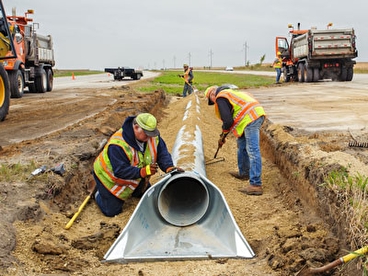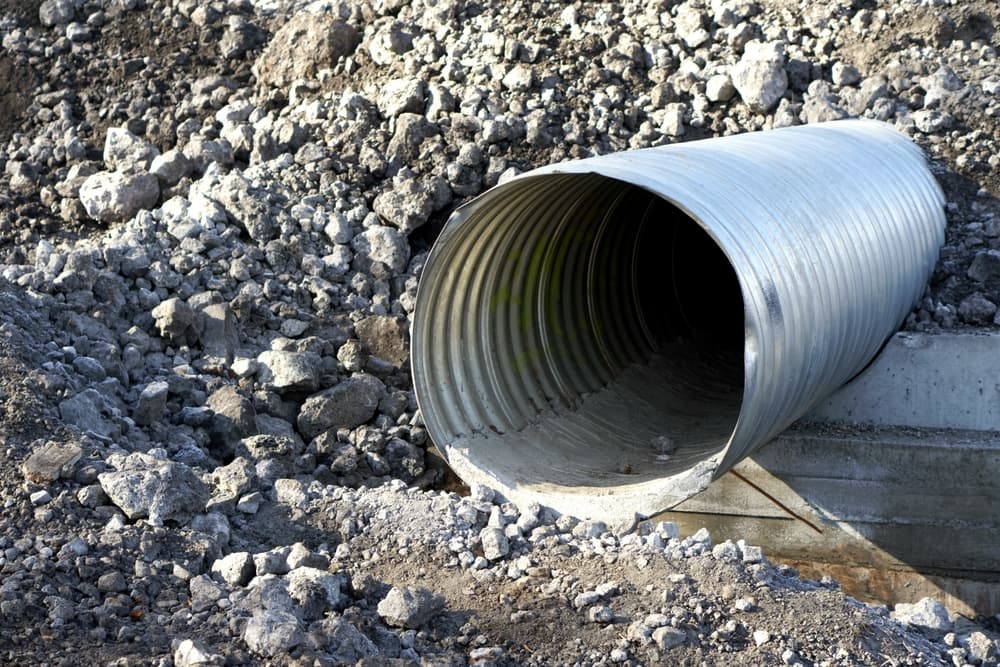Precision Pad Construction for Steady Structures
Precision Pad Construction for Steady Structures
Blog Article
Culvert Installment Made Easy: Step-by-Step Guide for Success
Mounting culverts might seem like a straightforward task, yet making sure an effective end result needs cautious planning and implementation. From selecting the ideal culvert size to integrating proper drain actions, each action in the setup procedure plays an essential role in the capability and durability of the culvert system. By following a methodical method and taking note of vital details, the installation can continue smoothly, reducing prospective problems down the line. Keep tuned to reveal the important actions and factors to consider that can make culvert installation a smooth and effective undertaking.
Choosing the Right Culvert Size
Selecting the appropriate culvert size is crucial for making certain efficient water circulation and architectural integrity in culvert installment projects - Pad Construction. The dimension of the culvert straight impacts the flow ability of water via the structure. A culvert that is too small can result in flooding and overflow, while one that is too huge might result in reduced water velocity, possibly causing sediment buildup and clogs
To establish the right culvert dimension, factors such as the watershed location, top flow prices, and hydraulic efficiency demand to be very carefully thought about. Estimations based upon these parameters aid in selecting a size that can appropriately manage the expected water quantity while minimizing the threat of blockages and architectural failing.
It is crucial to seek advice from engineering guidelines and standards to guarantee that the selected culvert size satisfies the job needs and neighborhood laws (Pad Construction). By picking the appropriate culvert size, project supervisors can maximize water circulation, stop potential issues, and enhance the overall effectiveness and longevity of the culvert installation
Preparing the Installment Website
Reliable culvert setup requires meticulous preparation of the installment site to make certain ideal structural assistance and functionality. Prior to beginning the installation procedure, it is critical to remove the site of any particles, vegetation, or blockages that could hamper the culvert's placement.
Additionally, it is very important to take into consideration factors such as soil composition, groundwater levels, and ecological effects when preparing the installment website. Conducting an extensive website assessment can help determine any kind of possible obstacles or risks that may influence the culvert's efficiency. By taking the time to prepare the setup website properly, you can assist ensure a successful culvert installment that fulfills architectural requirements and guarantees lasting functionality.
Placing the Culvert Correctly

The grade at which the culvert is placed is critical for keeping a correct slope for water flow. A gradual slope assists prevent pooling and advertises effective drainage. In addition, the culvert must be oriented properly to guarantee that the inlet and outlet remain in the correct locations. This alignment is necessary for the culvert to function successfully in taking care of water flow.
Backfilling and Condensing the Dirt
Proper backfilling and compaction of the soil around the culvert is necessary to make sure stability and protect against prospective issues in the future. When the culvert is appropriately put, the next crucial action is to backfill the location around it with ideal product. The backfill product need to be without rocks, debris, and natural matter to avoid damage to the culvert. It is advised to utilize granular product such as sand or crushed rock for backfilling, as it gives good drain and compaction buildings.
After putting the backfill material, it is necessary to compact it in layers of consistent density. Using a compactor or a mechanical tamper, small the dirt carefully to prevent harming the culvert. Compaction helps in decreasing the possibilities of negotiation and ensures uniform support around the culvert. It is essential to small the soil uniformly on all sides of the culvert to preserve its structural honesty.
Proper backfilling and compaction not only provide stability to the culvert however likewise assist in stopping dirt disintegration and preserving the durability of the culvert system.
Guaranteeing Correct Drain Integration
Incorporating reliable drain services plays an important role in the overall functionality and long life of culvert installments. Correct drain integration is necessary for managing water circulation, Culvert installation avoiding disintegration, and making sure the structural integrity of the culvert system. To attain this, it is crucial to design a detailed drainage plan that thinks about variables such as the volume of water anticipated, the topography of the area, and the type of dirt existing.

Furthermore, integrating functions like disintegration control procedures, such as riprap or plants, can further improve the performance of the drain system. By meticulously preparing and carrying out these drain options, culvert setups can operate successfully and hold up against the examination of time.
Conclusion
Finally, correct culvert installation is vital for maintaining effective drainage systems. By choosing the best culvert size, preparing the installation site, putting the culvert appropriately, backfilling and condensing the dirt, and guaranteeing proper drain combination, success can be attained. Adhering to these actions will assist make sure the longevity and performance of the culvert, inevitably adding to the overall success of the drain system.
Report this page